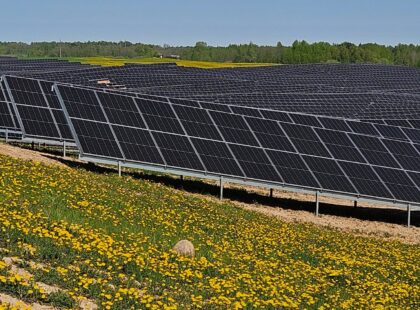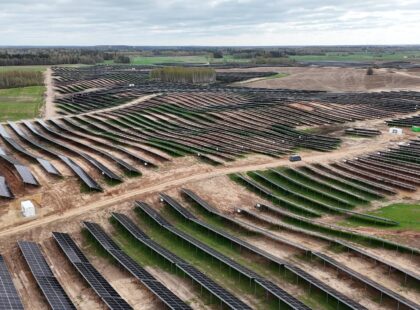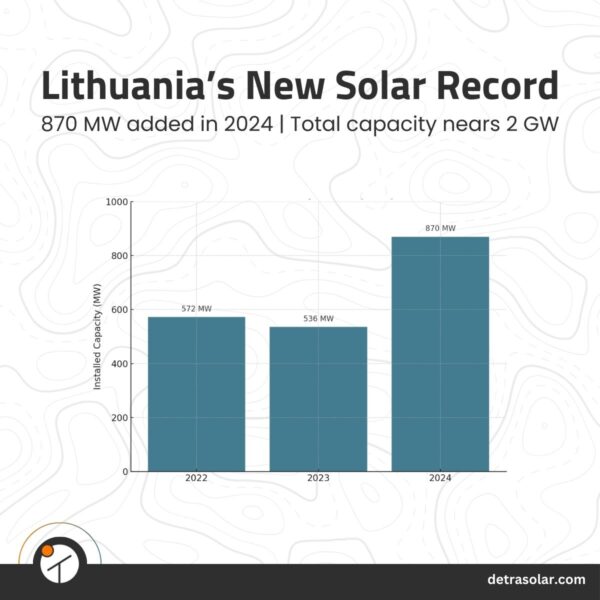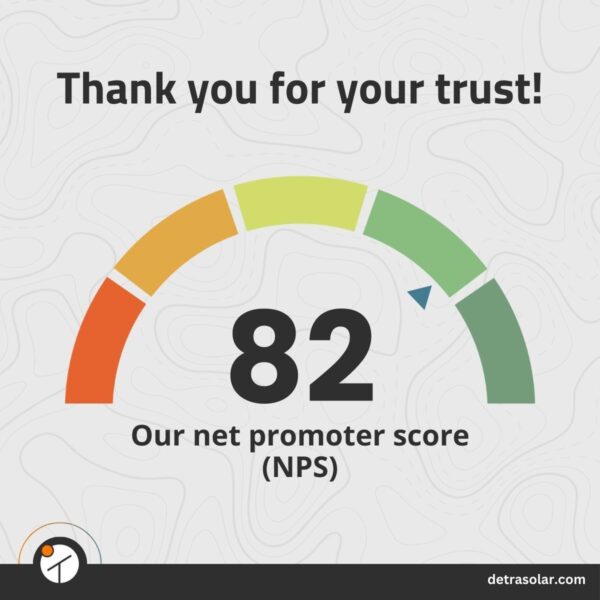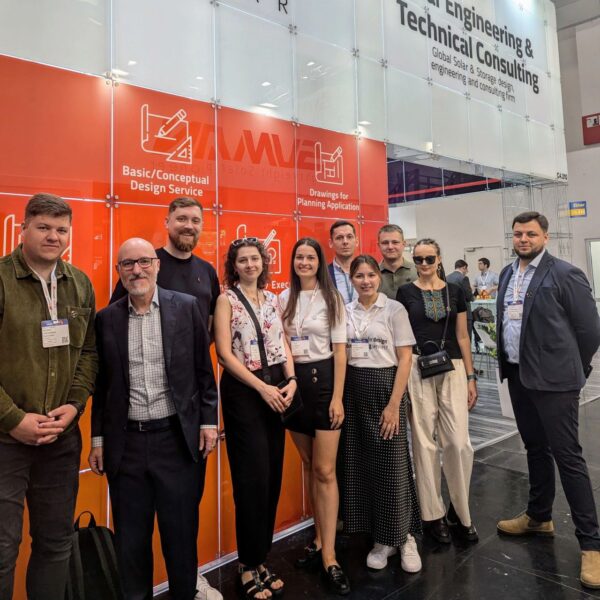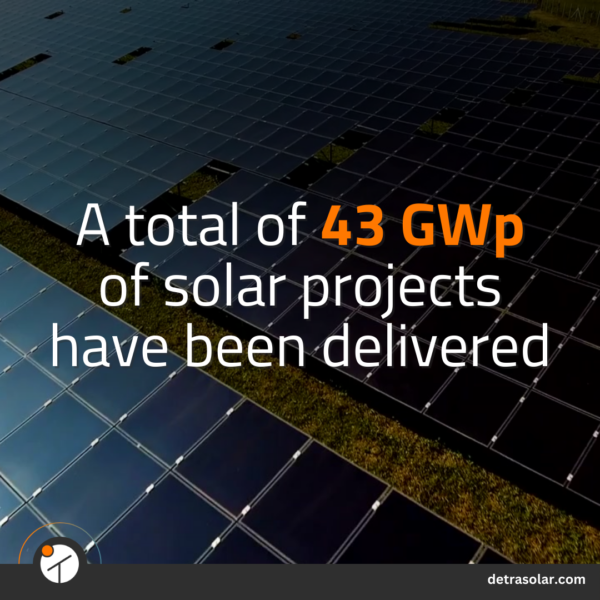When “Good Enough” Isn’t Enough: Fixing Hidden Risks in a Solar Park Layout

By Tomas Straigys, Lead Design Engineer at Detra Solar.
At Detra Solar, we believe that every solar project should be engineered for excellence – not just to meet the industry average. Recently, our team reviewed a 25 MW DC solar park design submitted to one of our clients by a competitor. At first glance, the layout appeared acceptable, but a closer look revealed hidden inefficiencies and even safety risks.
In this article, we’ll walk you through key findings from that review and show how our optimized design can reduce costs, increase energy output, and strengthen safety across the site.
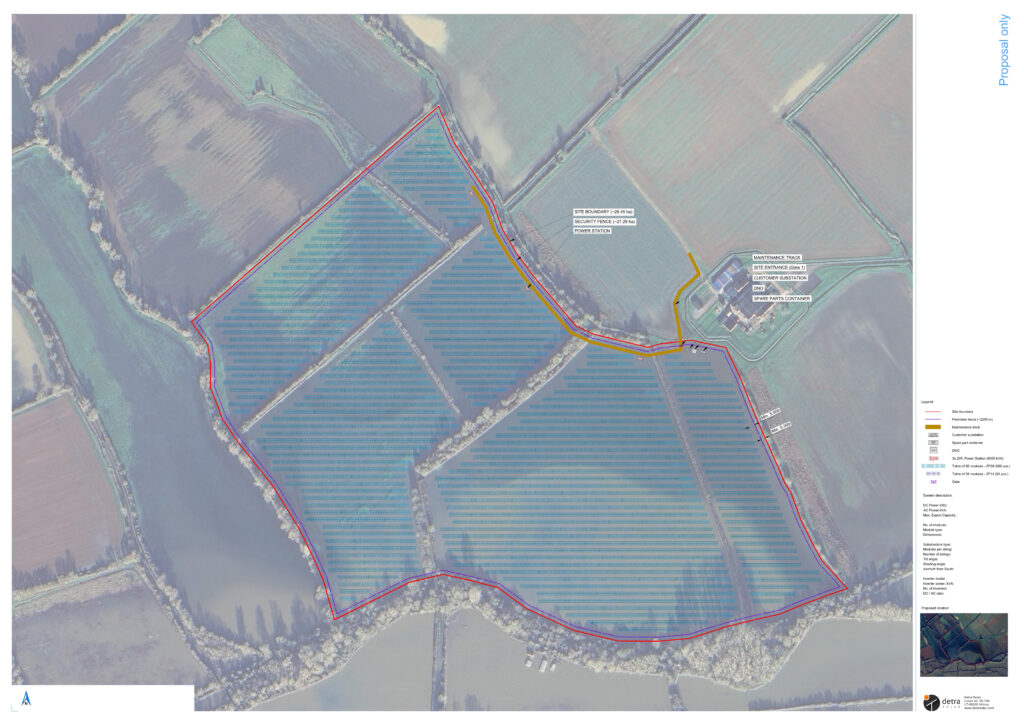
Design prepared by one of our competitors
Where the Competitor’s Design Fell Short
1. Shading from Obstacles
The competitor’s layout failed to properly account for shading caused by trees and bushes within and outside the site boundaries. This oversight directly impacts efficiency and energy yield. On the southern part of the site, shading risks were especially critical yet ignored.
2. Flood Risks
A nearby watercourse posed potential flooding issues. Even basic checks on Google Earth showed signs of standing water or wet soil, but the competitor’s design did not mark flood risk zones. Without this information, the client would miss critical safety precautions such as drainage.
3. Safety Distances from Buildings
Transformer stations and storage containers were placed too close to nearby buildings. Industry best practice requires at least a 50-meter offset, which was overlooked in the competitor’s design.
4. Poor Transformer Placement
Placing transformer stations far to the north created unnecessarily long AC cable runs and challenging trenching conditions. This not only increased energy losses but also added complexity and cost to the construction phase.
5. Inefficient Cable Design
Some module rows extended 300–400 meters without proper trenching considerations. This resulted in suboptimal DC cabling, further increasing losses.
6. Lack of Access Planning
The design did not include turnarounds near substations. Without these, construction traffic could easily become blocked, complicating the unloading process and day-to-day site logistics.
7. Fence Layout Inefficiencies
The fence line was simply offset from the boundary, creating unnecessary length and complexity. A simplified fence design would reduce costs and streamline installation.
8. Missing Technical Details
Key construction details – such as pile type, reference heights, tilt angles, and pitch – were missing. Without this information, contractors face uncertainty and potential errors during the build phase.
Detra Solar’s Optimized Design
When we took over the solar park layout, our goal was not just to fix visible flaws but to redesign the project so it could operate at its highest potential for decades to come. That meant addressing inefficiencies in shading, cable routing, and safety, while also improving constructability and reducing long-term costs. The result was a layout that balanced technical rigor, regulatory compliance, and practical construction insight – turning what started as a risky design into a safer, more efficient, and future-proof solar park.
Key improvements included:
- Shading Analysis: Trees and obstacles were accounted for, with shading cones included for visualization.
- Flood Risk Zones: Marked clearly so clients could plan drainage and mitigate risks.
Improved Station Placement: Transformer stations relocated centrally, reducing cable runs, energy losses, and construction complexity. - Road & Turnaround Design: Access routes optimized with added turning points to improve construction logistics.
- Fence Adjustments: Straightened and shortened where possible, cutting costs while maintaining security.
- Technical Clarity: Additional details such as tilt angle, inner spacing, shading angles, and reference heights included for construction readiness.
- Community Considerations: Added screening to reduce visual impact for nearby residents.
Together, these changes delivered a design that not only reduced costs and minimized losses but also improved safety, reliability, and long-term project value.
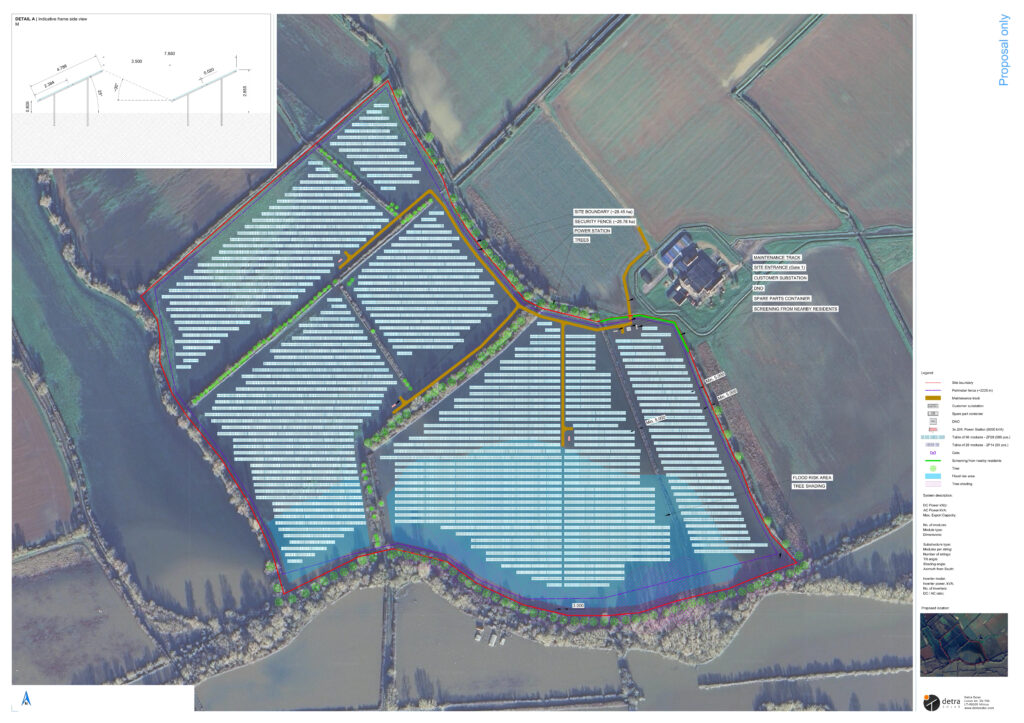
Design prepared by Detra Solar
Why Optimization Matters
For a project of 25 MW DC capacity, small design oversights can compound into significant long-term financial losses. The difference between an “acceptable” solar park and a high-performing one comes down to design. Longer cables, inefficient layouts, or shading issues can reduce yield and increase OPEX for years to come.
By applying engineering rigor and foresight, Detra Solar ensures that every project is not only compliant but also optimized for long-term performance and safety.
How Detra Solar Delivers Excellence
This optimization review is just one example of how we help clients unlock the full potential of their solar and storage projects. Our services cover the entire design lifecycle – from conceptual and planning-stage designs that assess project viability, to tendering and execution-ready drawings that ensure smooth construction, to optimization and owner’s engineering support that safeguard efficiency and compliance at every stage. Whether it’s embedding our engineers within client teams, carrying out detailed technical audits, or integrating BESS into PV layouts, our approach is always the same: combine deep expertise with practical insight to deliver projects that are safe, efficient, and future-proof.
💡 If you’re planning a solar project and want it engineered for excellence, not just average – reach out to Detra Solar.
Want to see these improvements explained in detail?
Watch our lead design engineer Tomas walk through the full optimization process in this video:
